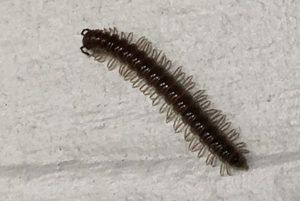
Charlie Hall on the Benefits of Plants
World-renowned Horticultural Economist Charlie Hall has assembled a wealth of research on the economic, environmental, health, and well-being benefits of …


El inglés es el idioma de control de esta página. En la medida en que haya algún conflicto entre la traducción al inglés y la traducción, el inglés prevalece.
Al hacer clic en el enlace de traducción se activa un servicio de traducción gratuito para convertir la página al español. Al igual que con cualquier traducción por Internet, la conversión no es sensible al contexto y puede que no traduzca el texto en su significado original. NC State Extension no garantiza la exactitud del texto traducido. Por favor, tenga en cuenta que algunas aplicaciones y/o servicios pueden no funcionar como se espera cuando se traducen.
Inglês é o idioma de controle desta página. Na medida que haja algum conflito entre o texto original em Inglês e a tradução, o Inglês prevalece.
Ao clicar no link de tradução, um serviço gratuito de tradução será ativado para converter a página para o Português. Como em qualquer tradução pela internet, a conversão não é sensivel ao contexto e pode não ocorrer a tradução para o significado orginal. O serviço de Extensão da Carolina do Norte (NC State Extension) não garante a exatidão do texto traduzido. Por favor, observe que algumas funções ou serviços podem não funcionar como esperado após a tradução.
English is the controlling language of this page. To the extent there is any conflict between the English text and the translation, English controls.
Clicking on the translation link activates a free translation service to convert the page to Spanish. As with any Internet translation, the conversion is not context-sensitive and may not translate the text to its original meaning. NC State Extension does not guarantee the accuracy of the translated text. Please note that some applications and/or services may not function as expected when translated.
Collapse ▲
World-renowned Horticultural Economist Charlie Hall has assembled a wealth of research on the economic, environmental, health, and well-being benefits of …
The 72nd Annual Crop Protection School will be held Wednesday, December 2, 2020, online via Zoom. RSVP is required, …

We often receive questions on how to grow Bloodroot. Margaret and Alison, with the NC Alternative Crops and Organics …

In the midst of the COVID-19 pandemic, it is reasonable to try and make fewer trips to the supermarket …

The first Extension Master Gardener℠ volunteer (EMGV) Therapeutic Horticulture program in Wake County was started in 2005 by Catherine …

A small group of Bullington lovers are preparing a scrapbook filled with newspaper articles and photographs, in order to …
“NOW, THEREFORE BE IT RESOLVED, that we, the delegates to the 98th State Agricultural Convention, assembled in Atlantic City, N.J., …

The mission of the Ability Garden is to use horticulture as a therapeutic intervention to improve human well-being. Enhancing …

A partnership of: The Henderson County Education Foundation Henderson County Public Schools N.C. Cooperative Extension–Henderson County, Bullington Gardens is a 12 acre horticultural …

Friday, August 16 and Saturday, August 17, 2013 in Pinehurst NC. ******************** Friday, August 16 – Pre-Conference Schedule 3:00 p.m. – 4:30 …

As if COVID-19 and Hurricane Isaias are not enough to keep all of us occupied, Asian giant hornets (aka, …

With odds increasing that Tropical Storm Isaias will hit some part of coastal North Carolina, we can expect some flooding …
Sivanto Prime for control of sugarcane aphid on sweet sorghum has been approved for use in North Carolina during …

Last year around this time, we had a stretch of very hot & dry weather that triggered a “millipede …

This week I have seen a couple species of lace bugs active on landscape plants. Yes, there are over …

For the past several weeks I have noticed damage to the leaves of my roses. Each year this happens and …

False oleander scale, Pseudaulacaspis cockerelli, is a tropical and subtropical pest originally from China. False oleander scale is common throughout …

Imported willow leaf beetle (Plagiodera versicolor) are common on willows in landscapes and natural areas. Most of year adults and …

Crape myrtles are among the most commonly planted trees in the Southeast. The two main pests are crape myrtle …